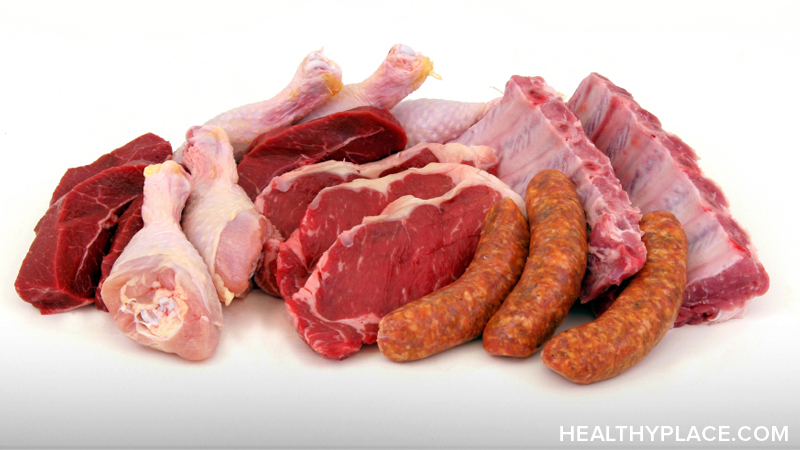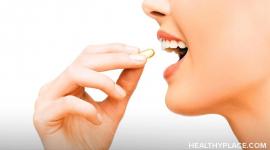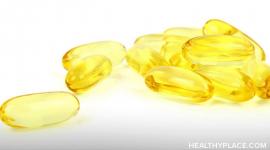Vitamin B3 (Niacin)

Vitamin B3 aka Niacin lowers bad cholesterol (LDL) and fat levels in the blood. Learn about the usage, dosage, side-effects of Niacin.
Common Forms: Niacinamide, Nicotinic acid, Nicotinamide, Inositol hexaniacinate
- Overview
- Uses
- Dietary Sources
- Available Forms
- How to Take It
- Precautions
- Possible Interactions
- Supporting Research
Overview
Vitamin B3, also called niacin, is one of eight water-soluble B vitamins. All B vitamins help the body to convert carbohydrates into glucose (sugar), which is "burned" to produce energy. These B vitamins, often referred to as B complex vitamins, are essential in the breakdown of fats and protein. B complex vitamins also play an important role in maintaining muscle tone along the digestive tract and promoting the health of the nervous system, skin, hair, eyes, mouth, and liver.
Niacin plays an important role in ridding the body of toxic and harmful chemicals. It also helps the body make various sex and stress-related hormones in the adrenal glands and other parts of the body. Niacin is effective in improving circulation and reducing cholesterol levels in the blood. Niacin needs can be partially met by eating foods containing protein because the human body is able to convert tryptophan, an amino acid, into niacin.
Dietary deficiency of niacin tends to only occur in areas of the world where people eat corn as a staple and don't use lime in fertilization. Corn is the only grain that is low in niacin. Lime releases tryptophan which, again, can be converted to niacin in the body. Symptoms of mild deficiency include indigestion, fatigue, canker sores, vomiting, and depression. Severe deficiency of both niacin and tryptophan can cause a condition known as pellagra. Pellagra is characterized by cracked, scaly skin, dementia, and diarrhea. It is generally treated with a nutritionally balanced diet and niacin supplements. Niacin deficiency also results in burning in the mouth and a swollen, bright red tongue In the United States alcoholism is the prime cause of Vitamin B3 deficiency.
Vitamin B3 Uses
Extremely high doses of niacin (available by prescription) have been shown to prevent and/or improve symptoms of the following conditions. Because of risk of toxicity people should always consult a knowledgeable health care provider before starting high doses of niacin.
High Cholesterol
Niacin is commonly used to lower elevated LDL ("bad") cholesterol and triglyceride (fat) levels in the blood and is more effective in increasing HDL ("good") levels than other cholesterol-lowering medications. However. High doses of niacin produce the side effects of flushing of the skin (which can be reduced by taking aspirin 30 minutes before the niacin), stomach upset (which usually subsides in a few weeks), headache, dizziness, blurred vision, and liver damage. Although the time-release form of niacin reduces flushing, long-term use is associated with liver damage.
Atherosclerosis
High doses of niacin medications are used to prevent development of atherosclerosis (plaque along the blood vessels that can cause blockage) and to reduce recurrent complications such as heart attack and peripheral vascular disease (atherosclerosis of the blood vessels in the legs that can cause pain with walking, called intermittent claudication) in those with the condition. According to a review of major clinical trials, the use of niacin for prevention and treatment of atherosclerosis and related conditions is "based on strong and consistent evidence" and appears to be as effective as certain medications for heart disease. Studies also suggest that high dose niacin may help relieve the symptoms of claudication - namely diminish the pain experienced with walking.
A recent study also found that the combination of niacin and a cholesterol-lowering drug called simvastatin (which belongs to a class known as HmG CoA reductase inhibitors or statins) may dramatically slow the progression of heart disease, reducing risk of heart attack, and even death.
Vitamin B3 and Diabetes
Because diabetes is often associated with atherosclerosis and heart disease, people with diabetes may benefit from nutrients that help manage elevated cholesterol levels and high blood pressure. Although niacin has been shown to boost HDL cholesterol and decrease triglyceride and LDL levels, there has been some concern that it may also raise blood sugar levels. In a recent study of 125 people with diabetes and 343 people without the condition, high doses of niacin (roughly 3000 mg/day), increased blood sugar in both groups, but hemoglobin A1C (considered a better measure of blood sugar over time) actually decreased in the diabetes group over a 60-week follow-up period. For this reason, if you have diabetes, niacin should only be used under the close monitoring of a qualified health care provider.
Osteoarthritis
Some preliminary studies suggest that vitamin B3, as niacinamide, may improve arthritis symptoms, including increasing joint mobility and reducing the amount of anti-inflammatory medications needed. Researchers speculate that niacinamide may aid cartilage repair (damage to joint cartilage causes arthritis) and suggest that it may be used safely along with NSAIDs (non-steroidal anti-inflammatory medications) to reduce inflammation. Further research is needed to fully understand how vitamin B3 benefits people with OA and to determine whether the results apply to large numbers of people with the condition. It does appear, however, that niacinamide must be used for at least 3 weeks before the benefits described are seen. Experts also suggest that long-term use (1 to 3 years) may slow the progression of the disease.
Cataracts
Dietary vitamin B3, along with other nutrients is important for normal vision and prevention of cataracts (damage to the lens of the eye which can lead to cloudy vision.) One study including 2900 people living in Australia found that people who consumed the most protein, vitamin A, and vitamins B1 (thiamine), B2, and B3 (niacin) in their diets were significantly less likely to develop cataracts. A follow-up study also found that many supplemental B complex vitamins (including B12, B9, B3, B2, and B1) exert a protective effect against cataracts.
Burns
It is especially important for people who have sustained serious burns to obtain adequate amounts of nutrients in their daily diet. When skin is burned, a substantial percentage of micronutrients may be lost. This increases the risk for infection, slows the healing process, prolongs the hospital stay, and even increases the risk of death. Although it is unclear which micronutrients are most beneficial for people with burns, many studies suggest that a multivitamin including the B complex vitamins may aid in the recovery process.
Other
An interesting area of research currently underway is the use of niacin skin care products as anti-aging agents, for treatment of acne, and, possibly, for prevention of skin cancer. Dermatologists expect that there will be information emerging about topical forms of niacin for these purposes over the next few years.
Vitamin B3 Dietary Sources
The best dietary sources of vitamin B3 are found in beets, brewer's yeast, beef liver, beef kidney, pork, turkey, chicken, veal, fish, salmon, swordfish, tuna, sunflower seeds, and peanuts.
Vitamin B3 Available Forms
Niacin is available in several different supplement forms: niacinamide, nicotinic acid, and inositol hexaniacinate. The form of niacin that is best tolerated with the least symptoms is inositol hexaniacinate. Niacin is available as a tablet or capsule in both regular and timed-release forms. The timed-release tablets and capsules may have fewer side effects than the regular niacin; however, the timed-release are more likely to cause liver damage and are therefore not recommended for long-term treatment. Regardless of the form of niacin being used, periodic checking of liver function tests is recommended when high-dose (2 - 6 gm per day) of niacin is used.
How to Take Vitamin B3
Daily requirements for niacin may be higher for those who have cancer, those who are being treated with isoniazid (for tuberculosis), and people with protein deficiencies.
Daily recommendations for niacin from the diet for healthy individuals are listed below.
It is important to note, however, that only extremely high doses of niacin (in the range of 1,500 to 3,000 mg per day in divided doses) are helpful for most medical conditions. Such high doses are considered "pharmacologic" and must be prescribed by a qualified healthcare practitioner. The practitioner will instruct you on increasing the amount of niacin slowly, over the course of 4 to 6 weeks, and to take the medicine with meals to avoid stomach irritation.
Pediatric
- Infants birth to 6 months: 2 mg (adequate intake)
- Infants 7 months to 1 year: 4 mg (adequate intake)
- Children 1 to 3 years: 6 mg (RDA)
- Children 4 to 8 years: 8 mg (RDA)
- Children 9 to 13 years: 12 mg (RDA)
- Males 14 to 18 years: 16 mg (RDA)
- Females 14 to 18 years: 14 mg (RDA)
Adult
- Males 19 years and older: 16 mg (RDA)
- Females 19 years and older: 14 mg (RDA)
- Pregnant females: 18 mg (RDA)
- Breastfeeding females: 17 mg (RDA)
Precautions
Because of the potential for side effects and interactions with medications, dietary supplements should be taken only under the supervision of a knowledgeable healthcare provider.
High doses (75 mg or more) of niacin can cause side effects. The most common side effect is called "niacin flush," which is a burning, tingling sensation in the face and chest, and red or "flushed" skin. Taking an aspirin 30 minutes prior to the niacin may help reduce this symptom.
At the very high doses used to lower cholesterol and the other conditions mentioned previously, liver damage and stomach ulcers can occur. When taking pharmacologic doses of niacin, your doctor or other healthcare practitioner will periodically check your liver function through a blood test. People with a history of liver disease or stomach ulcers should not take niacin supplements. Those with diabetes or gallbladder disease should do so only under the close supervision of a healthcare provider. Niacin should not be used if you have gout.
Taking any one of the B complex vitamins for a long period of time can result in an imbalance of other important B vitamins. For this reason, it is generally important to take a B complex vitamin with any single B vitamin.
Possible Interactions
If you are currently being treated with any of the following medications, you should not use niacin without first talking to your healthcare provider.
Antibiotics, Tetracycline
Niacin should not be taken at the same time as the antibiotic tetracycline because it interferes with the absorption and effectiveness of this medication. Niacin either alone or in combination with other B vitamins should be taken at different times from tetracycline. (All vitamin B complex supplements act in this way and should therefore be taken at different times from tetracycline.)
Aspirin
Taking aspirin before taking niacin may reduce flushing associated with this vitamin. This should only be done under the advice of a healthcare practitioner.
Blood Pressure Medications, Alpha-blockers
When niacin is taken with certain blood pressure medications known as alpha-blockers (such as prazosin, doxazosin, and guanabenz), the likelihood of side effects from these medications is increased.
Cholesterol-lowering Medications
Niacin binds bile-acid sequestrants (cholesterol-lowering medications such as colestipol, colesevelam, and cholestyramine) and may decrease their effectiveness. For this reason, niacin and these medications should be taken at different times of the day.
As described earlier, recent scientific evidence suggests that taking niacin with simvastatin (a drug that belongs to a class of cholesterol-lowering medications known as HMG-CoA reductase inhibitors or statins including atorvastatin and lovastatin as well), appears to slow down the progression of heart disease. However, the combination may also increases the likelihood for serious side effects, such as muscle inflammation or liver damage.
Diabetes Medications
People taking insulin, metformin, glyburide, glipizide, or other medications used to treat high blood sugar levels should monitor their blood sugar levels closely when taking niacin supplements.
Isoniazid (INH)
INH, a medication used to treat tuberculosis, may deplete levels of niacin and cause a deficiency.
Nicotine Patches
The use of nicotine patches with niacin may worsen or increase the risk of flushing reactions associated with this vitamin when used medicinally.
back to: Supplement-Vitamins Homepage
Supporting Research
Adding vitamins to the mix: skin care products that can benefit the skin [press release]. American Academy of Dermatology; March 11, 2000.
Antoon AY, Donovan DK. Burn Injuries. In: Behrman RE, Kliegman RM, Jenson HB, eds. Nelson Textbook of Pediatrics. Philadelphia, Pa: W.B. Saunders Company; 2000:287-294.
Bays HE, Dujovne CA. Drug interactions of lipid-altering drugs. Drug Safety. 1998;19(5):355-371.
Brown BG, Zhao XQ, Chalt A, et al. Simvastatin and niacin, antioxidant vitamins, or the combination for the prevention of coronary disease. N Engl J Med. 2001;345(22):1583-1592.
Capuzzi DM, Guyton JR, Morgan JM, et al. Efficacy and safety of an extended-release niacin (Niaspan): a long-term study. Am J Cardiol. Dec 17, 1998;82:74U - 81U.
Cumming RG, Mitchell P, Smith W. Diet and cataract: the Blue Mountains Eye Study. Ophthalmology. 2000;107(3):450-456.
De-Souza DA, Greene LJ. Pharmacological nutrition after burn injury. J Nutr. 1998;128:797-803.
Ding RW, Kolbe K, Merz B, de Vries J, Weber E, Benet Z. Pharmacokinetics of nicotinic acid-salicylic acid interaction. Clin Pharmacol Ther. 1989;46(6):642-647.
Elam M, Hunninghake DB, Davis KB, et al. Effects of niacin on lipid and lipoprotein levels and glycemic control in patients with diabetes and peripheral arterial disease: the ADMIT study: a randomized trial. Arterial Disease Multiple Intervention Trial. JAMA. 2000;284:1263-1270.
Gaby AR. Natural treatments for osteoarthritis. Altern Med Rev. 1999;4(5):330-341.
Gardner SF, Marx MA, White LM, et al. Combination of low-dose niacin and pravastatin improves the lipid profile in diabetic patients without compromising glycemic control. Ann Pharmacother. 1997;31(6):677-682.
Gardner SF, Schneider EF, Granberry MC, Carter IR. Combination therapy with low-dose lovastatin and niacin is as effective as higher-dose lovastatin. Pharmacother. 1996;16:419 - 423.
Garg A. Lipid-lowering therapy and macrovascular disease in diabetes mellitus. Diabetes. 1992;41(Suppl 2):111-115.
Goldberg A, Alagona P, Capuzzi DM, et al. Multiple-dose efficacy and safety of an extended-release form of niacin in management of hyperlipidemia. Am J Cardiol. 2000;85:1100-1105.
Guyton JR. Effect of niacin on atherosclerotic cardiovascular disease. Am J Cardiol. Dec 17, 1998;82:18U - 23U.
Guyton JR, Capuzzi DM. Treatment of hyperlipidemia with combined niacin-statin regimens. Am J Cardiol. Dec 17, 1998;82:82U - 84U.
Jacques PF, Chylack LT Jr, Hankinson SE, et al. Long-term nutrient intake and early age related nuclear lens opacities. Arch Ophthalmol. 2001;119(7):1009-1019.
Jokubaitis LA. Fluvastatin in combination with other lipid-lowering agents. Br J ClinPract. 1996;77A(Suppl):28-32.
Jonas WB, Rapoza CP, Blair WF. The effect of niacinamide on osteoarthritis: A pilot study. Inflamm Res. 1996;45:330-334.
Kirschmann GJ, Kirschmann JD. Nutrition Almanac. 4th ed. New York: McGraw-Hill;1996:88-99.
Kuroki F, Iida M, Tominaga M, et al. Multiple vitamin status in Crohn's disease. Dig Dis Sci. 1993;38(9):1614-1618.
Kuzniarz M, Mitchell P, Cumming RG, Flood VM. Use of vitamin supplements and cataract: the Blue Mountains Eye Study. Am J Ophthalmol. 2001;132(1):19-26.
Matsui MS, Rozovski SJ. Drug-nutrient interaction. Clin Ther. 1982;4(6):423-440.
McCarty MF. Niacinamide therapy for osteoarthritis - does it inhibit nitric oxide synthase induction by interleukin-1 in chondrocytes? Med Hypotheses. 1999;53(4):350-360.
Meyer NA, Muller MJ, Herndon DN. Nutrient support of the healing wound. New Horizons. 1994;2(2):202-214.
Nutrients and Nutritional Agents. In: Kastrup EK, Hines Burnham T, Short RM, et al, eds. Drug Facts and Comparisons. St. Louis, Mo: Facts and Comparisons; 2000:4-5.
O'Hara J, Nicol CG. The therapeutic efficacy of inositol nicotinate (Hexopal) in intermittent claudication: a controlled trial. Br J Clin Prac. 1988;42(9):377-381.
Omray A. Evaluation of pharmacokinetic parameters of tetracylcine hydrochloride upon oral administration with vitamin C and vitamin B complex. Hindustan Antibiot Bull. 1981;23(VI):33-37.
Physicians' Desk Reference. 54th ed. Montvale, NJ: Medical Economics Co., Inc.: 2000:1519-1523.
Rockwell KA. Potential interaction between niacin and transdermal nicotine. Ann Pharmacother. 1993;27(10):1283-1288.
Torkos S. Drug-nutrient interactions: a focus on cholesterol-lowering agents. Int J Integrative Med. 2000;2(3):9-13.
Visalli N, Cavallo MG, Signore A, et al. A multi-centre randomized trial of two different doses of nicotinamide in patients with recent-onset type 1 diabetes (the IMDIAB VI). Diabetes Metab Res Rev. 1999;15(3):181-185.
Whelan AM, Price SO, Fowler SF, et al. The effect of aspirin on niacin-induced cutaneous reactions. J Fam Pract. 1992;34(2):165-168.
Yee HS, Fong NT, Atorvastatin in the treatment of primary hypercholesterolemia and mixed dyslipidemias. Ann Pharmacother. 1998 Oct;32(10):1030-1043.
back to: Supplement-Vitamins Homepage
APA Reference
Staff, H.
(2008, December 19). Vitamin B3 (Niacin), HealthyPlace. Retrieved
on 2025, November 30 from https://www.healthyplace.com/alternative-mental-health/supplements-vitamins/vitamin-b3-niacin



